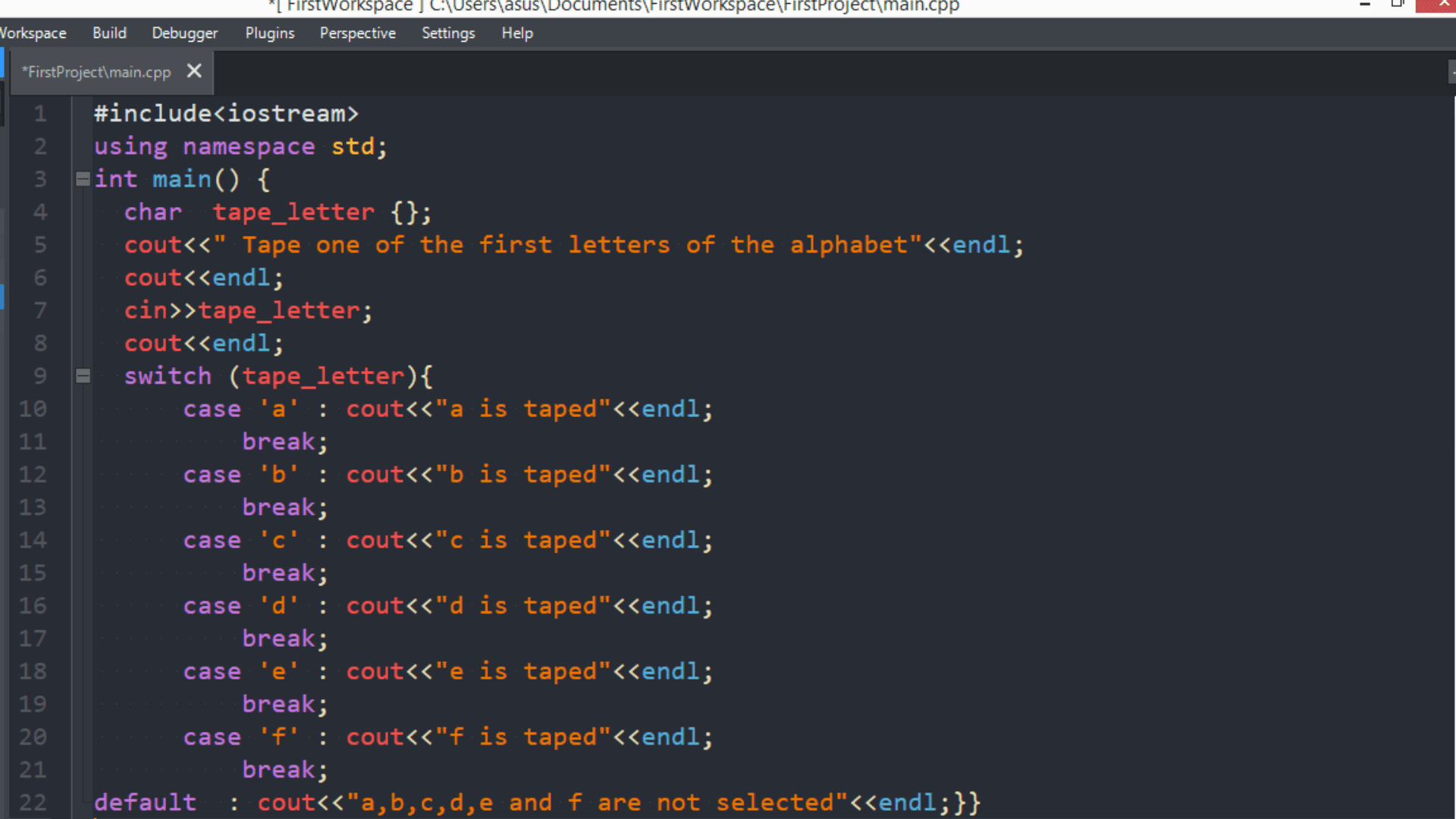Introduction
Did you know that switch case statements in C++ can be used to test for all sorts of conditions?The article will propose an entire course about switch case in C++.
What is a Switch Case C++ Statement?
A switch statement is a control statement that allows the programmer to check for different conditions and run the appropriate block of code. The switch case statement is a multi-way branch, which means it will execute one of many possible blocks of code depending on the value of an expression.A switch case statement can be used to replace many if-else statements, simplifying the code and reducing potential errors.
How to Write a Switch Case Statement in C++
Switch statements in C++ are used to select from among several possible values, depending on the value of an expression.A switch statement is a control statement that selects one of many blocks of code to execute. The general form is:
The general form is:
switch (expression) {case constant 1:statementsbreak;case constant 2:statementsbreak;case constant 3:statementsbreak;case constant 4:statementsbreak;. . .default:statement;break;}
Better understand
- The expression is an integer or a character only.
- The expression can be a variable or an expression that refers to an integer.
- The constant is a specific value, and even variables are not accepted.
The expression is evaluated. If it matches any of the labels, then statements following that label will be executed until the next break or the end of the switch clause. If no match is found, the default statements are executed.The break statement is optional, but it is a best practice.Switch statements have a default case to be executed when any previous cases mutches.
Switch Case in C++ Advantages
The switch case C++ statement is a control statement that selects one of many blocks of code to execute. The switch case C++ statement consists of a controlling expression, typically a value, compared with several possible values.
The switch case C++ statement has the following advantages:
-It can be used in place of if-else statements when there are multiple conditions to test and the conditions are known to be mutually exclusive.
-It can be used in place of if-else statements when there are multiple conditions to test and the conditions overlap.
– It executes faster than nested if-else statements.- It can provide a more readable solution than nested if-else statements.
Take notes
Every character taped is an integer because the computer reads it as an integer referring to the ASCII Printable Characters, Which makes saying that the constant is an integer usually valid.
Examples for a deeper understanding
Example1
The program asks the user to tape a letter. The value of the control expression will be compared to the value proposed in the statement of the case keyword.

The code of the program
#include<iostream>using namespace std;int main() {char tape_letter {};cout << ” Tape one of the first letters of the alphabet” << endl;cout << endl;cin >> tape_letter;cout << endl;switch (tape_letter) {case ‘a’:cout << “a is taped” << endl;break;case ‘b’:cout << “b is taped” << endl;break;case ‘c’:cout << “c is taped” << endl;break;case ‘d’:cout << “d is taped” << endl;break;case ‘e’:cout << “e is taped” << endl;break;case ‘f’:cout << “f is taped” << endl;break;default:cout << “a,b,c,d,e and f are not taped” << endl;}}
The output of the program

Example 2

The code of the program
#include<iostream>using namespace std;int main() {int math_score {};cout << ” Tape your math score between 0 and 20″ << endl;cout << endl;cin >> math_score;cout << endl;switch (math_score) {case 20:cout << “You are so cool” << endl;break;case 19:cout << “You are gorgeous” << endl;break;case 18:cout << “Good” << endl;break;case 17:cout << “fan” << endl;break;case 16:cout << “Acceptable start” << endl;break;case 15:cout << “improvable” << endl;break;case 14:cout << “do more” << endl;break;case 13:cout << “above average” << endl;break;case 12:cout << “very average” << endl;break;case 11:cout << “Average” << endl;break;case 10:cout << “very average” << endl;break;default:cout << “I’m not satisfied with you working hard” << endl;}}
The output of the program

Conclusion

The switch case statement begins with the word “switch” followed by an expression that evaluates to an integer or character value. This expression is then compared in some cases until it finds one that matches, which will then be executed. If no case is matched, the default case is executed.
